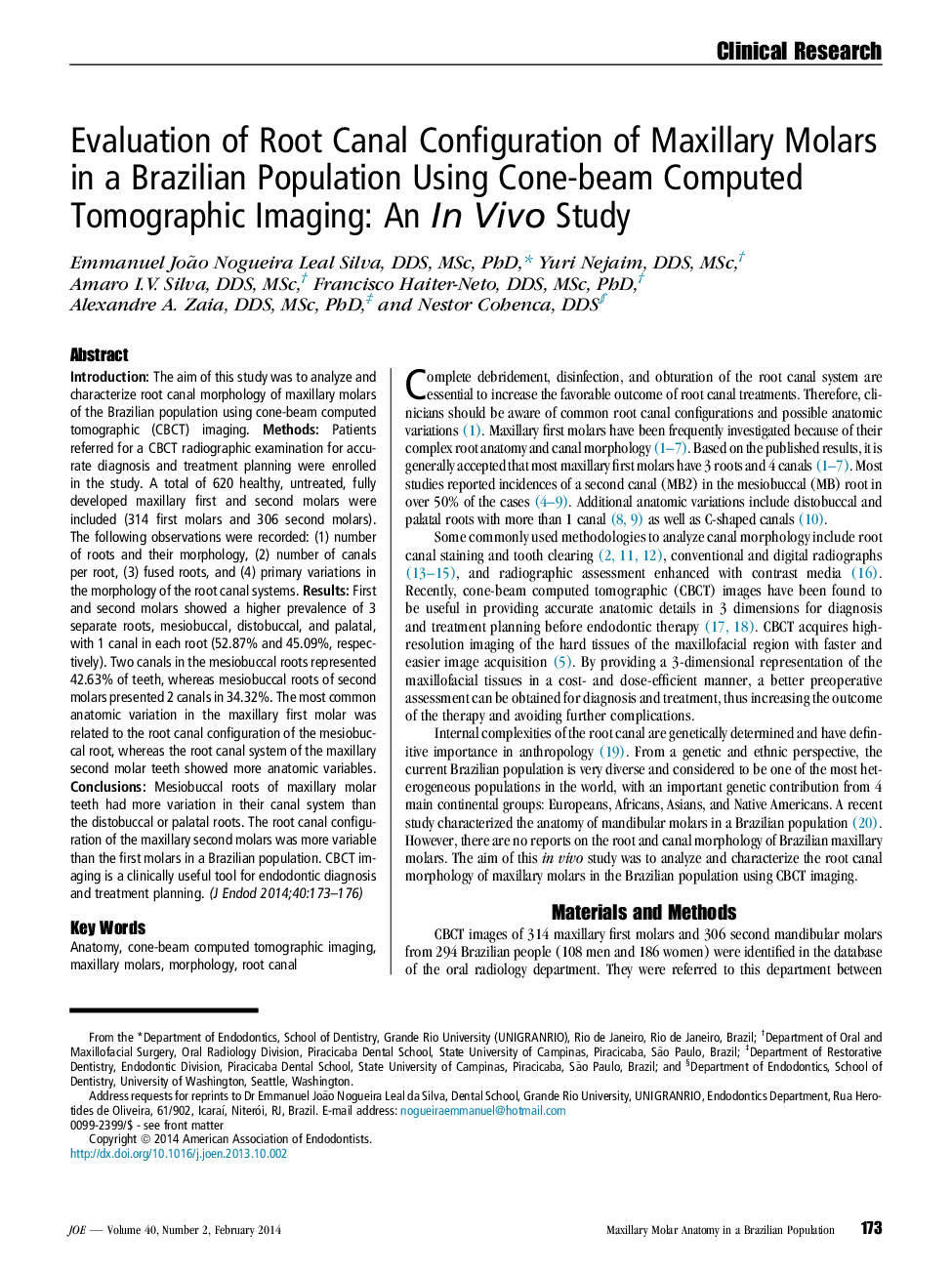| Article ID | Journal | Published Year | Pages | File Type |
|---|---|---|---|---|
| 3146891 | Journal of Endodontics | 2014 | 4 Pages |
IntroductionThe aim of this study was to analyze and characterize root canal morphology of maxillary molars of the Brazilian population using cone-beam computed tomographic (CBCT) imaging.MethodsPatients referred for a CBCT radiographic examination for accurate diagnosis and treatment planning were enrolled in the study. A total of 620 healthy, untreated, fully developed maxillary first and second molars were included (314 first molars and 306 second molars). The following observations were recorded: (1) number of roots and their morphology, (2) number of canals per root, (3) fused roots, and (4) primary variations in the morphology of the root canal systems.ResultsFirst and second molars showed a higher prevalence of 3 separate roots, mesiobuccal, distobuccal, and palatal, with 1 canal in each root (52.87% and 45.09%, respectively). Two canals in the mesiobuccal roots represented 42.63% of teeth, whereas mesiobuccal roots of second molars presented 2 canals in 34.32%. The most common anatomic variation in the maxillary first molar was related to the root canal configuration of the mesiobuccal root, whereas the root canal system of the maxillary second molar teeth showed more anatomic variables.ConclusionsMesiobuccal roots of maxillary molar teeth had more variation in their canal system than the distobuccal or palatal roots. The root canal configuration of the maxillary second molars was more variable than the first molars in a Brazilian population. CBCT imaging is a clinically useful tool for endodontic diagnosis and treatment planning.
